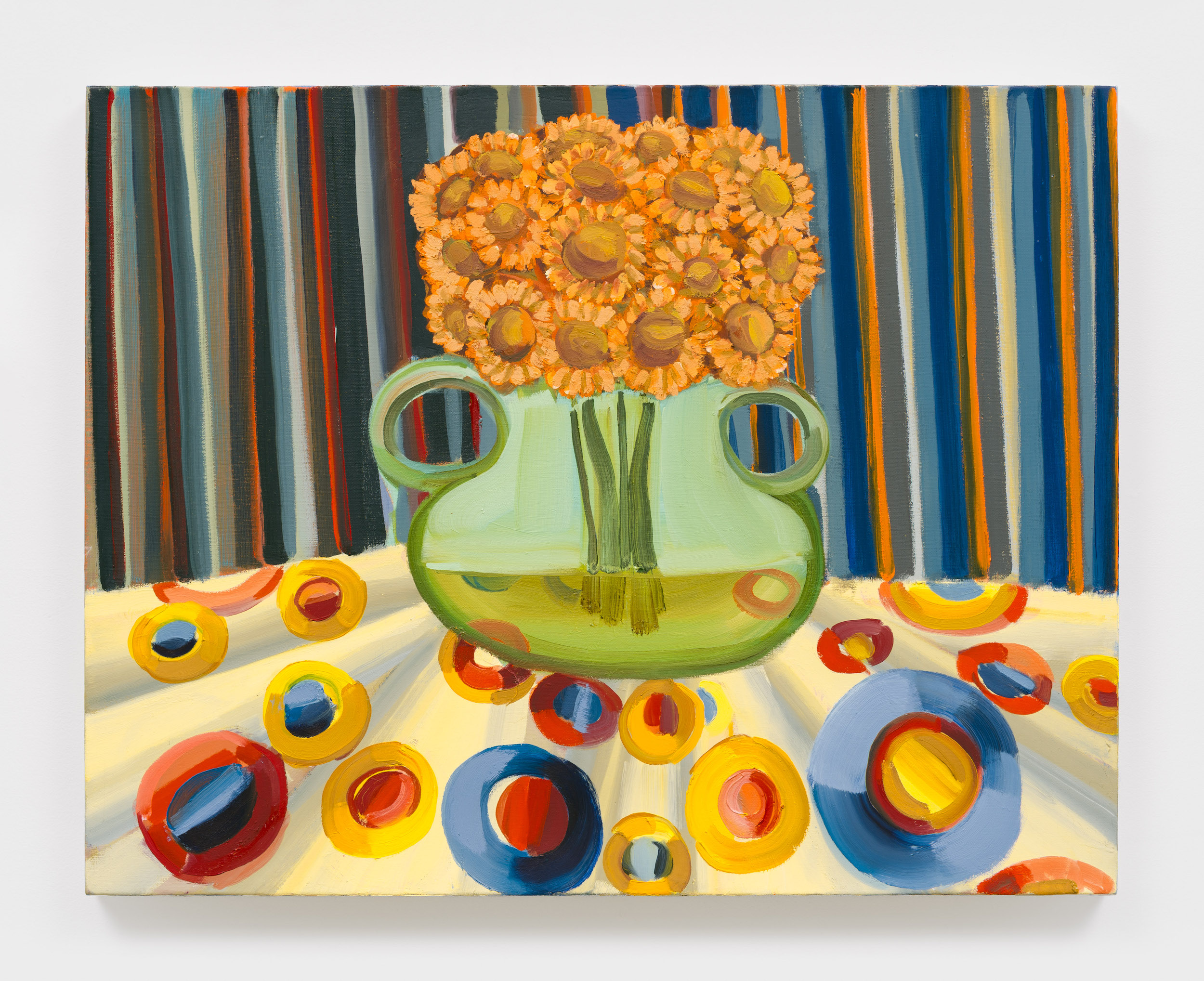The title of Judith Linhares’s current exhibition at PPOW Gallery, The river is moving, The blackbird must be flying, consists of the 12th stanza of Wallace Stevens’s poem “Thirteen Ways of Looking at a Blackbird” (1917). Together, the two short sentences imply, on the one hand, what we observe and, on the other, what we surmise and imagine: “The river moves. The blackbird must be flying.”
Linhares’s paintings, comprising just a few elements yet bodied forth in endless permutations of the paint and marks that constitute them, might at first seem an easy read. The apparent rapidity of the renderings in the 17 canvases (all 2023–24) is deceptive. Their images live mainly on or just behind the front plane and are perfectly lucid. But they are built of myriad constellations of facture — the full, sure strokes that delineate an image even as they disassemble it in facets of color; the radiant diagonals that make the childlike scenes glow with a light bred of opacity; paint laid on thickly even when it depicts translucency. A tight compression of flowers at the center of the still lifes gives way to a riot of patterning that opens the compositions, propelling them forward, landing directly on the nervous system. In “Freya’s Flowers,” the multicolored orbs of a tablecloth pattern tumble toward us like a visual rockslide as the prim cluster of blooms and neatly striped wallpaper stand in abeyance. The still life is anything but still.
Linhares’s narratives present both whimsy and menace. The two largest paintings (each around 67 inches wide) convey fairytales of labor. In “Housekeeping,” an odalisque reclines on a quilted blanket, their head thrown back and feet pressed toward a roaring fire. Rendered in strokes of blue, their face an inverted, mask-like skull with gaping black features, the figure is a deathly presence that renders the fire futile. Behind, four small, goblin-like women link hands, one holding a broom, ominously. They have emerged from a little house to one side. The warm colors that compose them seem to absorb the rays of a huge sun, illuminated windows, and a field of harvest gold, as a rocky orb hovers elsewhere in the sky. In “Clearing,” one woman chops wood as a second sits nearby on the cut logs, an empty bucket fallen from her hand. This slacker, scowling, is mainly purple, while the laborer is orange: coolness and heat set up as oppositions. All takes place in nature entirely fabricated of chroma and pattern — grounds of riotously patterned cloths and skies that cascade as theatrical backdrops.
One is hard pressed to solve the riddles posed. Why is the blue lady cradling a rabbit? Is the queen of hearts being addressed in a letter? Is a genie about to emanate from a lit lamp, its rays bending the surrounding air, or is he safely ensconced as the sketch of a man in a robe hanging on the wall nearby? The works evoke the colored interiors of Matisse and Bonnard. An image of a lion menacing a pair of embracing lovers recalls Rousseau and Brancusi. The throwback to Modernism is entirely welcome, as is the slowness of looking demanded by Linhares, at the peak of her abilities.



Judith Linhares: The river is moving, The blackbird must be flying continues at PPOW Gallery (392 Broadway, Tribeca, Manhattan) through April 19. The exhibition was organized by the gallery.

